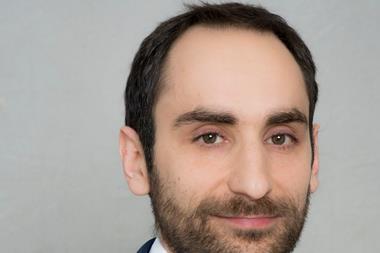As the industry ponders the medium-term implications of quantitative easing, sharp fiscal adjustment in Ireland, Greece and elsewhere, intervention by the Bank of Japan in the Japanese equity market, ‘currency wars' and the future of the Obama presidency, they must confront a stark reality. Three intellectual crises define the current economic and financial environment. The resolution of these crises will be evolutionary, a phenomenon that will likely depress global equity price earnings ratios and lead to continued volatility. Furthermore, ongoing large government intervention in the economy clearly raises the possibility of a policy mistake.
The first intellectual crisis is in macroeconomics. Macroeconomics has never claimed to be focused on short-term forecasting, but rather has concentrated on general equilibrium relationships between product, labour and money markets, market and government failures, the allocation of scarce resources, and assessing the impact of various policy alternatives. If progress in thinking about economic problems was thought to be cumulative, prior to the great recession most macroeconomists believed that the risks of another depression were a thing of the past. Thus, Nobel laureate Robert Lucas remarked in 2003 that the "central problem of depression-prevention has been solved". While a few astute observers highlighted the imbalances leading up to the global financial crisis of 2007-09, in general macroeconomists failed to appreciate adequately the interaction between the financial and real sectors. Trillions of dollars later, we are still learning.
A related failure of macroeconomics was the belief that the so-called ‘great moderation' was a permanent fixture, and that markets will move gradually to equilibrium without government intervention. Stubbornly high unemployment and the adoption of massive fiscal stimulus in many countries shows that many policymakers believe Keynesian models of the economy, thought to be discredited by the ‘stagflation' of the 1970's, are still relevant. However, the debate about fiscal multipliers and Ricardian equivalence is ongoing. The adoption of different fiscal policies in the US and Europe underscores the limits to Keynesian economics and the tension between activist policies and unpleasant budget constraints.
A related failure of macroeconomics was the widely-held view that financial markets were self-regulating and that enlightened self-interest would prevent large negative externalities. In October 2008, testifying before the US House of Representatives Committee on oversight and government reform, former Federal Reserve Bank chairman Alan Greenspan expressed "shocked disbelief" at developments in capital markets and suggested that he had put too much faith in the self-correcting power of free markets. Sadly, some derivatives and forms of securitisation thought to decrease and manage risk made it worse.
It is no wonder economists including Joseph Stiglitz and Jeffrey Sachs advocate a rethink of macroeconomics, and particularly its micro-foundations and prior beliefs. Some economists also propose alternative measures of economic welfare that they believe to be more robust than GDP.
The second intellectual crisis is in central banking. Olivier Blanchard, head of research at the IMF, suggests that central banks consider a 4% inflation target rather than a target of 2-2.5%. The reason is that in a period of weakness a central bank might reach its zero lower bound too quickly with a 2% target. After experiencing a very painful period of disinflation, children of the 1970s find a 4% inflation target remarkable. Such a target could represent a doubling of prices in roughly 18 years - well within the life span of a Northern European widow living on fixed pension in Spain.
The debate over quantitative easing casts a light on the current weakness in the monetary transmission mechanism. A 2003 IMF report highlights that both deflation and inflation can be unanticipated. It is generally thought that the tools are in place to prevent a Japanese-style deflation in the US. With the 12-month forward P/E ratio on the MSCI World Index now at roughly 14 (it stood in the high 20s 10 years ago), market participants are clearly signalling concern over policy efficacy. As Richard Koo points out in ‘The Holy Grail of Macroeconomics', it is not just the supply of bank lending that falls in post-crisis busts, but also the demand.
The crisis also clearly raises the question of what the proper focus of monetary policy should be and the priorities given to macro-prudential regulation and asset prices.
A third intellectual crisis lies in finance; the crisis exposed the weaknesses in asset-pricing theory and multiple heuristic biases among investors. For decades, many investors believed that markets were efficient, that the risk-free rate was truly risk-free, that liquidity is continuous and that broad diversification can adequately limit downside risk. The crisis tested each of these assumptions and revealed weaknesses in single period mean-variance analysis.
Modern portfolio theory (MPT) has deeply affected investors' thinking about financial markets - its proponents never claimed that market efficiency implied perfect foresight. However, some of the major foundations of MPT are now more than 40 years old. The dot.com and sub-prime bubbles of the last 10 years illustrate the potential for herding in markets and misallocation of resources by investors.
Both academic and empirical evidence suggest that the market portfolio may not be the most efficient. As a result, structured beta products (such as equal-weighted indices) are becoming more popular. But before investors aggressively adopt such an approach, they may wish to remember that not all investors can own equally-weighted portfolios, and remind themselves of Fisher Black's admonition that one has to seek to understand the theory underlying a purported statistical anomaly.
These three intellectual crises have created a period of exceptional uncertainty. The output gap in the US is estimated at roughly $1trn - the crisis may well have reduced the path of potential output growth in the US for several years. While it looks like the global economy is recovering, investors should learn the lessons of the crisis and monitor the latest academic thinking about the economy.
For example, given the tendency for correlations to move to close to 1.0 in periods of extreme financial stress, investors may wish to construct a hedging portfolio rather than rely on diversifying assets to mitigate risk. They may wish to supplement econometric techniques with historical and scenario analysis. Given the tendency for markets to overshoot, they might want to consider greater allocation to tactical asset allocation and active emerging market strategies. And they may want to reconsider the balance between active and passive strategies, as the prospect of a Japan-style deflation in the US is at least worth contemplating. In such an environment, companies with operating and financial flexibility would likely outperform, and sector selection could add value.
The great recession and great panic following the collapse of Lehman Brothers are unique in the experience of most current investors. The confluence of events that brought about the perfect storm rested on intellectual foundations that have been severely tested. Will the great recession produce a new Keynes? Each investor needs to decide for herself whether the events of 2007-09 represent a particularly severe recession or a structural break in the functioning of global financial markets.
In any event, advocates of a ‘mixed economy' model appear to be on the ascendancy, with a re-examination of the theories leading up to the crisis, and gradual advances in macroeconomic, central banking and asset pricing theory. Intellectual humility is appropriate.

























.jpg)





No comments yet